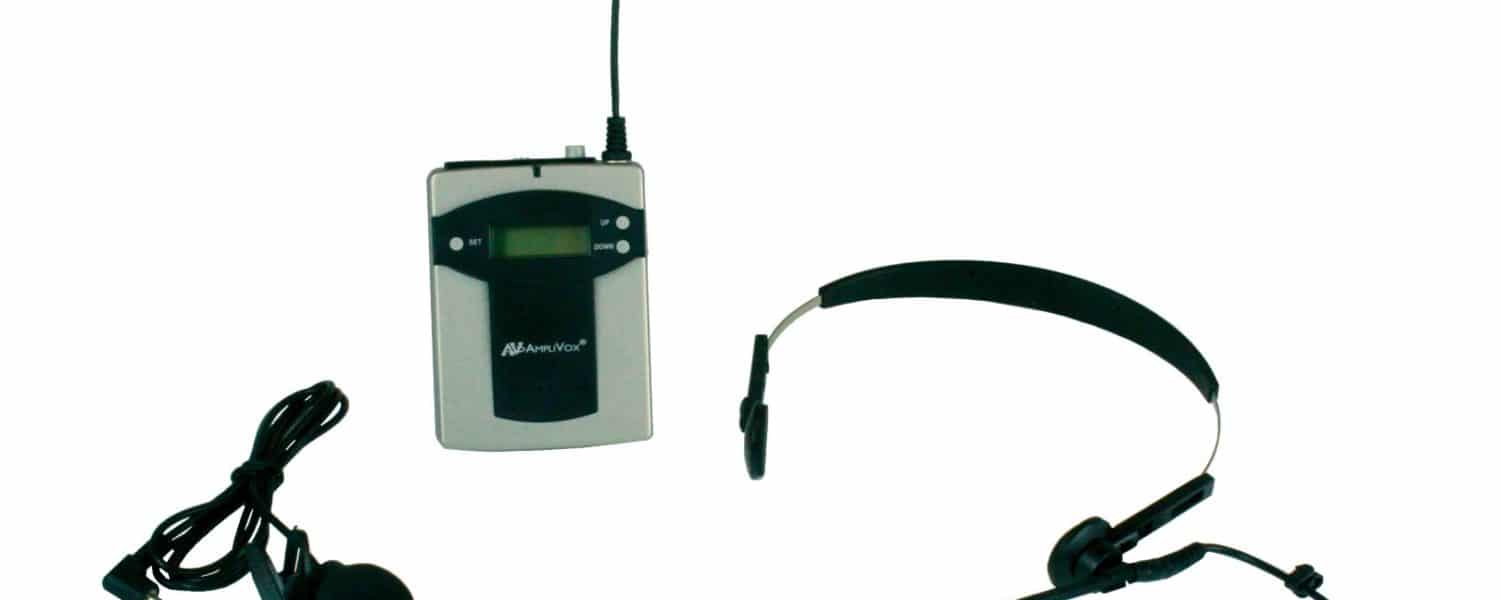By Don Roth
Thankfully, we’re long past the days when the only way to speak to a large group of people – or have them hear you from a distance – was to shout louder. Imagine how hard that can be on your voice after doing it for a period of time!
And, if you’re someone who can’t project your voice strongly, you’re in danger of quickly losing your audience. That’s why microphones and PAs are so important in the educational environment.
The first electric microphones for converting sounds into electrical signals were developed in the late 1800s. Over the years, microphone technology developed for use in telephones, public address systems, hearing aids, radio and TV broadcasting, etc.
Basic Microphone Technology
The microphone acts as a transducer, a device that converts acoustic energy into electrical energy, which is then carried into an amplifying device and speaker where it is converted back into acoustic energy.
Since the microphone is the start of the sound amplification process, it is critical that it clearly and accurately captures the sound. If it doesn’t, even the best electronics and speakers can’t make up for it. So, having a good microphone is important.
Two of the most commonly used types of microphones are dynamic and condenser. A dynamic microphone acts like a loudspeaker, but in reverse. A small, movable induction coil, positioned in a magnet’s magnetic field, is attached to a diaphragm. Sound waves cause the diaphragm to vibrate, creating an electronic current in the induction coil. Dynamic mics tend to be rugged and reliable.
A condenser microphone uses two plates to use the principle of capacitance to convert sound waves into electrical energy. Condenser microphones produce high-quality audio signals and thus are the choice in many recording studios.
A variation of condenser microphone is the electret condenser mic, which works very efficiently to generate high-quality sound.
Wired vs. Wireless
All microphones were wired until the advent of the wireless mic some 60 years ago. The development of wireless mics has created freedom of movement for instructors, coaches, guest speakers, entertainers, etc. A wireless mic requires a wireless transmitter – typically either in the microphone itself or a separate unit that clips to a belt or is inserted in a pocket. It also requires a wireless receiver that picks up the signal and carries it to the amp and speakers.
In today’s school environment, the wired “house” PA system, while often a primary “go-to” source of broadcast communication, is limited to the extent of the location of speakers and possible microphone inputs. For example, sometimes classrooms do not have the capability to input sound into the main PA system. That’s where supplementary, portable PAs can provide great value.
Lecterns with Microphones
An excellent option for many educational settings is a lectern with a built-in microphone. Many lecterns and podiums are available with a built-in electret condenser gooseneck mic that generates high-quality sound while allowing the presenter to stand up to 20 inches away from the mic. Typically, the lectern would also have an XLR audio output for connecting the microphone to an existing house sound system.
If a house sound system is not available, there are lecterns with built-in wireless PA systems, including gooseneck mic, built-in amplifier and speakers, and even a wireless receiver and wireless microphone – typically handheld, headset, lapel, or over-ear. A lectern with wireless sound gives the presenter the ability to roam away from the lectern to better engage with his/her audience – always a good presentation technique.
Lecterns with their own built-in PA systems have the capability to reach audiences as large as several thousand people in large lecture halls, auditoriums or gymnasiums. Many models have built-in casters for excellent mobility, so there’s no need to limit the lectern’s use to just one setting. Some models are constructed of durable molded plastic that is compatible with outdoor use even in harsh conditions.
If AC power is not available, there are rechargeable batteries that can power the lectern’s PA for hours.
Emergency Communications
Today’s pandemic and other public emergencies have many educational institutions re-thinking their PA capabilities for reaching large audiences, or reaching people widely dispersed by social distancing. There are various options available:
- Amplified megaphones (as opposed to simple cone megaphones used by cheerleaders) are a very simple type of PA system. They typically contain a microphone, amplifier, and speaker all in one compact unit. The advantages of megaphones are that they are compact, portable, and very loud. The disadvantages of megaphones are that the sound quality is often distorted, plus they are very directional; the sound is heard best in whatever direction the microphone is pointed. Another potential issue is user fatigue from holding the megaphone for long periods of time. However, there are models that have microphones that connect by a cord to the unit, so that the user need hold only the mic to his mouth – not the entire megaphone.
- Horn-style hailers are built for wider disbursement of sound, higher quality sound, and extended use of up to 200 hours on batteries. These units can project sound a half-mile or more.
- Vehicle-Mounted Sound Cruiser, featuring horn speakers on a vehicle roof and amplifier and microphone inside the vehicle.
- Portable PAs, ranging from smaller models with a speaker mounted on a belt, to handheld units, to more powerful models featuring up to 250 watts of power and the capability to reach 10,000 people. Many of the PAs can be mounted on tripods or combined with additional speakers for even greater sound coverage.
Voice amplification has come a long way from the development of the first microphone. From the fully wired house sound system, to wireless microphones and portable lecterns and PAs, today’s options ensure that no one at your school need run the risk of “not being heard.”
Don Roth is chief executive officer of AmpliVox Sound Systems in Northbrook, Illinois. AmpliVox designs, manufactures, and sells top-quality portable PAs, megaphones, lecterns, and multimedia furniture, www.Ampli.com.





